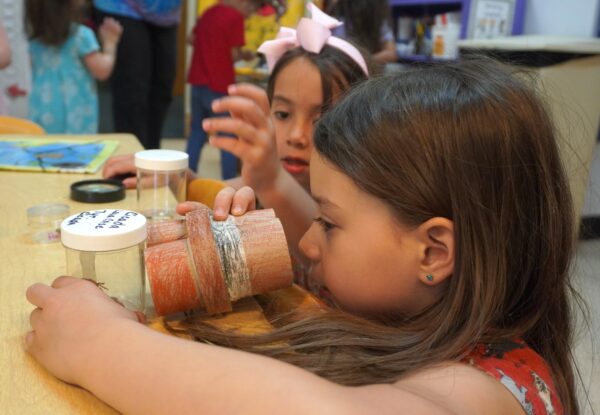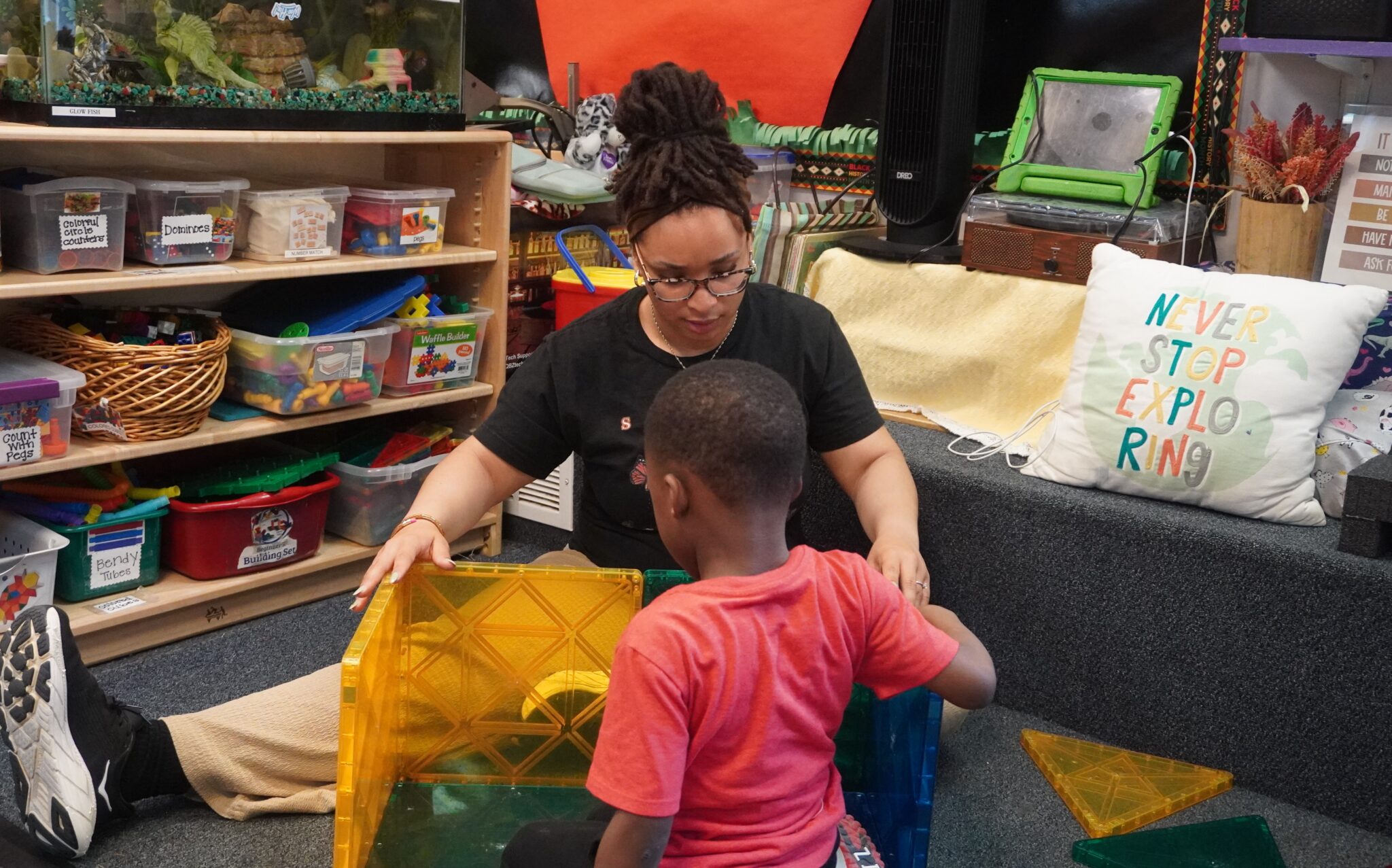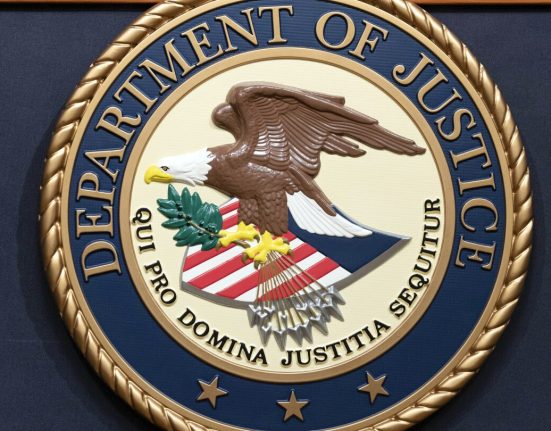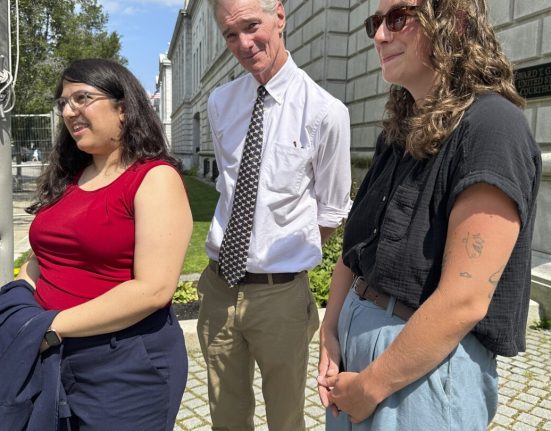Dozens of advocates gathered in a webinar Wednesday to try to determine the impact of the possible loss of $125 million in federal aid to Maryland schools this year, part of $6.8 billion in education funding frozen just last week by the Trump administration.
They know this much: The news is not good.
“It’s really difficult times,” said Mary Gable, assistant state superintendent for student support and federal programs with the Maryland Department of Education, toward the end of Wednesday’s hourlong webinar. “We are concerned about finances. We are concerned … at the state level, at the local education level and at the community-based organization level.”
The U.S. Education Department informed school systems on June 30 — one day before the funds were scheduled to become available — that it had frozen the release of $6.8 billion in federal aid as part of its “ongoing programmatic review of education funding.” A spokesperson for the Office of Management and Budget said that no final decisions had been made but that “initial findings have shown that many of these grant programs have been grossly misused to subsidize a radical leftwing agenda.”
Most of the funding being withheld would have reached low-income students, provided before- and after-school programming or taught English instruction to non-English-speaking students.
Crisaly De Los Santos says those programs were not targeted by accident.
“It’s a direct attack on Black and brown [people] and the immigrant community, not just in Maryland but across the country,” said De Los Santos, CASA’s director for Baltimore and Central Maryland, in an interview Wednesday. “Withholding this funding will directly affect students who need it the most.”
Freeze on federal funds
State officials did not provide a dollar amount for all programs, but said the estimated $125 million Maryland could lose in frozen federal funding would affect these programs:
- Title I, Part A (Improving basic programs operated by Local Education Agencies): $26.7 million (8.3%) decrease
- Title I, Part C (Migrant education): No funds allocated
- Title II, Part A (Teacher and school leader support): No funds allocated
- Title III, Part A (English learners): No funds allocated
- Title IV, Part A (Student support and academic enrichment): No funds allocated
- Title IV, Part B (21st Century before- and after-school): No funds allocated
- Title V (Rural education): $2,621 (1.7%) decrease
- McKinney-Vento (Homeless education assistance): $251,481 (11.3%) decrease
The money, approved by Congress in March as part of a continuing budget resolution, would have been available for the upcoming school year. Besides support for migrant education and low-income students, the money would have funded support for educators, adult education and literacy programs, among others.
Preliminary estimates in Maryland show the state could lose about $125 million, said Raven Hill, spokesperson for the state Department of Education, in an email sent Tuesday. “These funds represent real dollars and real positions in school systems across our state,” she said.
It remains unclear exactly how Maryland will be affected with summer programs and those in the fall.
Erik Peterson, senior vice president of policy for the Washington, D.C.-based Afterschool Alliance, gave a presentation in Wednesday’s webinar that included information on the 21st Century Community Learning Centers. The National Education Association said Maryland would normally get a little more than $25 million in that program for summer and after-school programs. Peterson said about 100 communities receive those grants to support nearly 24,000 students.
“It’s putting whole organizations at risk,” said Ellie Mitchell, director of the Maryland Out of School Time Network, that works to boost after-school and summer programs statewide, in an interview Wednesday. Mitchell’s organization co-hosted the webinar with Peterson’s group.
Mitchell said 21st Century grant recipients in Maryland are mostly concentrated in Baltimore City, Prince George’s County, the Eastern Shore and some Western Maryland counties.
“The funds are targeted for Title 1 schools and schools that have 40% or more of their students eligible for free and reduced meals,” Mitchell said. “It’s going to disproportionately impact the counties and places that have the highest concentration of kids in poverty.”
Both Mitchell and Peterson said advocates need to talk to federal, state and county elected officials about how important the programs are in serving students and their families.
“Continue that drumbeat,” Peterson said.
‘In this kind of limbo’
Gov. Wes Moore’s (D) office is “deeply concerned” about the potential cuts and will partner with the state Education and Labor departments to assess the potential impact for Maryland, said Moore spokesperson Carter Elliott IV in an email.
“These reductions will translate into real and immediate losses for our schools in every corner of the state,” Elliott said. “These reductions could put teaching jobs, after- and summer-school programs and adult education programs at risk, hurting teachers, students, and families across the state.”

Maryland’s overwhelmingly Democratic congressional delegation routinely criticizes the Trump administration, and their response to the frozen school funding was no different.
“This Administration is obsessed with making lives worse for kids and families,” Sen. Angela Alsobrooks (D-Md.) said in an emailed statement Wednesday. “My reaction is one of deep frustration at this Administration’s decision to turn its back on the next generation and at my colleagues for enabling it.”
In the meantime, educators such as Katie Cole continue to wait and see how much money will be released and how it will affect Dorchester County schools, where he works, and the system’s nearly 4,600 students.
Cole said federal funds have paid for fifth-grade students (estimated at $150 each) to spend a week in NorthBay in Cecil County. The trip is built into the science curriculum, allows students to learn “team building” activities while learning about nature and the environment. It also helps prepare them for science literacy when taking the Maryland Integrated Science Assessments exam.
Cole, an elementary school teacher and president of Dorchester Educators, said the school system receives federal money for other programs and initiatives, including student conflict resolution with the nonprofit Mid Shore Mediation, the Junior Achievement Academy in Salisbury and a teacher academy partnership with the University of Maryland Eastern Shore.
“Programs like these really help students,” Cole said. “Everyone is in this kind of limbo with these federal cuts.”
YOU MAKE OUR WORK POSSIBLE.







